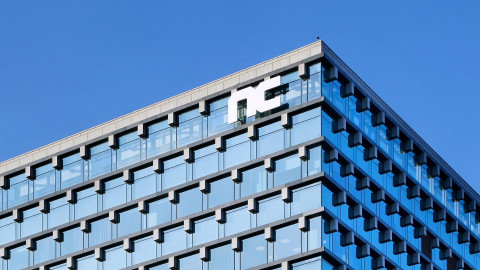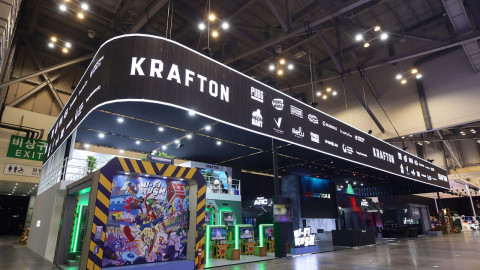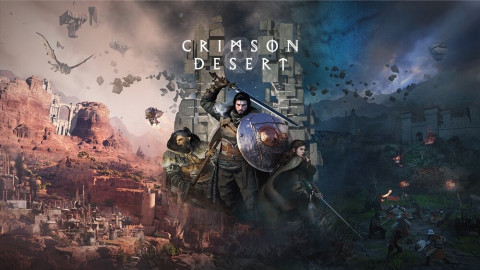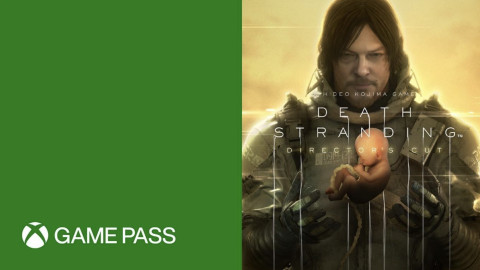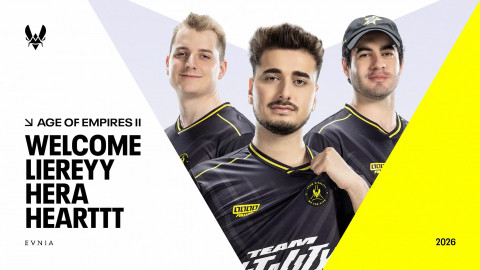
The release of the highly anticipated ‘God of War Ragnarök’ is just a few weeks away. With information about the game both already released and rumored, people have a general idea of what the game is about, but it’s still hard to grasp what the game looks like.
We at Inven had a chance to play the game early. After playing the early parts of the upcoming title, we, alongside other media outlets, had a chance to ask some questions about the game. Alongside outlets from Hong Kong, Taiwan, Indonesia, and other Southeast Asian countries, God of War Ragnarök’s game director, Eric Williams answered questions about the game.

The intro of the previous game, ‘God of War’, started off with Kratos fighting against Baldur, which left a great impression on the fans. Can the fans also expect such an impactful intro in this game as well? Without spoiling it, what can you tell us about the intro?
We thought a lot about how we can make the opening better than before. Just like the Baldur fight sequence, we thought that having such an action-filled sequence in this game will definitely make our fans happy. However, there was a story that we wanted to tell in the opening scenes, and we needed to put in the work on whether or not that story will be received positively by the fans. I want to say that we tried to create a fight sequence that just isn’t about the action, but that it also tells a story.
I’m sure that everyone watched a lot of action scenes in various movies, games, and other forms of media, but not a lot of them left an impression. However, integrating a story into those action scenes allows us to express it in detail, thus leaving a greater impression to the fans. There’s even a story about a metaphorical statue within the opening scene, so if you pay attention to the story during the action, you’ll be able to figure it out.

I have to ask about the level design. It seems that there are levels that you can’t access until you beat the game; does this game also have the same mechanic as the first game, where these levels unlock post-game?
Correct. Just like the first game, there are areas where you can’t explore initially. You may have the tools to access such areas if you return after progressing through the game. If you’re more of a collector type of player, you can just continue to progress through the game.
Even if you don’t revisit certain areas of the game, it won’t affect the overall gameplay. Such a system exists for those that like to really explore the levels. We’re aware of different types of players; the ‘killers’, the ‘explorers’, the ‘perfectionists’, and the ‘socialists’. We tried to focus the game to satisfy the needs of the first two types of players.
Through contents like this, the hope is for the players to really immerse themselves into the game by utilizing various tools to create their own world. Who knows? A unique plot twist may just exist in God of War Ragnarök.
Kratos’ main weapons in the beginning of God of War was an axe and a shield, and Kratos regained his Blades of Chaos through story progression. What can you tell us about some of Kratos’ new weapons, abilities, and movesets?
Since I can only talk about the first few hours of the game, it’s hard to go into detail about it. However, compared to the previous game, we hoped that anyone can change the gameplay the way they want it to be.
That’s why there are multiple shields within the game that each focuses on sturdy defense, parry, or counterattack. With the skill tree system, players can customize which skills Kratos can learn.

Is the size of the developer team the same as the first game? How did the team overcome the troubles of working through the pandemic era?
It was definitely difficult. We had to learn how to work remotely from our homes, and that came with obstacles. The communication became much harder, and it was harder to fix the mistakes that came from miscommunication while working remotely.
This may seem trivial, but not being able to eat together was a bigger problem than we thought. Our lunchtime isn’t just lunchtime for us; we end up brainstorming a lot of great ideas through the conversations that we have during lunch.
In the end, we had to create a virtual environment that can overcome a lot of these obstacles, and it was very tough. Fortunately, we started to plan on creating a system for remote work before the pandemic began. Because we had such a big picture of how it would look like, we were able to adapt faster.
The motion capture work for the cinematic cutscenes was our biggest obstacle. It was tough to find the right time to coordinate the studio time and the actors’ schedule. We were able to pull through in the end, and looking back on it, it wasn’t a challenge we looked forward to tackling, but it was a worthwhile one.
The story of the previous God of War also showed the relationship between a father and a son. A few years have passed since the first game, and Atreus is now in his teenage years. What are some of the new and important perspectives when it comes to character expression?
It’s been a long time since the release of the first God of War in late 2018 to the release of Ragnarök. Kratos has been training Atreus in his backyard during that time, and as you’ll find out in the opening sequence of the game, he’s been teaching him a lot. There’s not much dialogue in it, but they now know each other to the point where they don’t need to verbally communicate to know what each other needs. It’s very different from the Atreus of the first game, where he verbally received instructions and even had arguments with Kratos.
Atreus learned at the end of the first game that his real name is Loki. Kratos also learned that his wife was a Frost Giant. Unlike how the conversation was more one-sided between the adults and Atreus in the first game, he now starts to ask questions. It’s no longer one-sided. For the first time, he’s dedicating his time in figuring out the situation.
Atreus wants to figure out the other half of his roots, but there’s no one to ask because his mom’s gone. Kratos gets frustrated in not being able to help his son, so he helps him to become stronger and to critically think through training.
However, the child wants to learn all these things outside of his father’s wings, while Kratos, knowing that he cannot answer Atreus’ questions but doesn’t want to lose him, tries to keep Atreus under him. All parents and their children go through the same thing, where the child wants to do something, but the parents tell them that they’re too young. The same conflict between Kratos and Atreus can be found in the first hour of the game.
In the end, the father-son relationship will continue to be explored in Ragnarök. No matter how old we get, we’re all still someone’s child in the end, so everyone goes through the same growing pains. It comes in different forms, but it never goes away. We’ll get to explore how the relationship between the teenager Atreus and Kratos changes throughout the game.

The growth of Kratos and Atreus was one of the best aspects of the first God of War. How does Ragnarök put the spotlight on other characters, while also maintaining the spotlight on the two protagonists?
I believe that Kratos and Atreus became stronger, and learned how to be a family. Brok and Sindri were always conflicting, while Freya and Baldur’s relationship deteriorated. In the end, Freya lost her family, Brok and Sindri became a family again, and the father-son relationship between Kratos and Atreus became stronger.
In the end, the story is all about family. We witnessed characters losing, regaining, and conflicting with their family in the first God of War. We get to meet another family, Thor and Odin. Through various families, players will get to learn what it means to be a family.
Even in battle, players will get to experience Atreus working with others in combat. Atreus is excelling at all the things Kratos has taught him, and I believe that the players will fully experience what our message is.

Will the player experience in PS4 and PS5 be different, as it offers additional high end functions with the PS5?
We’re aware that there are a lot of users who played the previous game on the PS4, so we wanted to make sure that those without a PS5 got to play the game later. That’s why we developed the game so that it can be played both on the PS4 and the PS5 from the get go. I personally cleared the game three times on the PS4, and I can proudly say that it performs just as great as it did in 2018.
Of course, the game can be played on 4K, 60 fps. Users will get to experience unbelievable graphics, as well as haptic feedback, adaptive triggers, as well as 3D audio. No matter which console this game is played on, I’m certain that the experience will be the best of the best, because the best engineers worked on this game.
Santa Monica Studios’ first God of War was a very daring attempt, to the point where it was adventurous. It’s safe to assume that there was a lot of pressure, so was there any of that same pressure in this game as well?
Every one of us at our studio have gathered to create the best games, and I want to thank Sony for their tremendous support. Our studio, as well as those in the leadership positions such as Yang, Cory and I, have all worked towards providing opportunities to create the best games, and it’s one of the reasons why we were able to maintain such tight teamwork.
Looking back on the development process, I think it’s meaningless to point out who worked harder, because we all poured everything to create Ragnarök. That’s how it’s supposed to be if you want to create a game to be remembered. It’s what we do, and the motivation is behind our desire to create the best games.

Will Kratos and Atreus be able to explore the same areas in the first game? Or is Ragnarök focused on new areas?
To avoid spoilers, I think it’s best if players experienced the game firsthand. However, the areas from the first games will feel very different, let alone the new areas of the game. That’s why I believe Ragnarök will feel both familiar and new at the same time.
Familiar places such as the lake, as well as creatures like the World Serpent all exist, but it’ll be very different. The lake being completely frozen is a great example. It’s like revisiting a country a couple years later, where some shops will still be there after many years, but some old, 50-year old shops may have gone out of business. That’s why I think it’s worthwhile to revisit the places that one may have visited already.
At first glance, it doesn’t feel that a lot had changed, apart from the narrative. What are some aspects that have definitely changed since the first title?
It’s been a couple of years since the first God of War, so some things may seem familiar, while it may just feel like a totally different game. As you progress through the game, players will be able to find things that are new in Ragnarök.
In terms of combat, we wanted to allow the players to be creative. We didn’t want the players to just continuously block and beat up their enemies. That was the key. Depending on how players approach the game, they can either be very aggressive, or sit back patiently, learn the patterns of their enemies, then approach. There are new attack patterns in Ragnarök, so I believe that players can create their own combat gameplay.
One thing to add here is that while the protagonists are a team, we didn’t want the players to control two players at the same time, as it felt that it would overload the player experience.
The God of War franchise released many titles that told the stories of Greek mythology in their games. Does the Norse saga of God of War end with Ragnarök? If so, does this game have the volume to showcase all the different Norse Gods?
There will be a lot of characters from Norse mythology that many will be already aware of. I believe that we have created the perfect ending to such characters in Ragnarök, so I hope that people will play the game themselves to find out.

Based on the first few hours of the game, the one-shot camera approach felt really good. Why did you feel it was important to keep it the same as the first God of War? How did this approach impact the narrative of the story?
The one-shot camera approach not only separates the user experience from that of other action adventure games, but it also allows the players to feel like they’re always with the protagonist. We felt that if the camera angle changes, the immersive aspect of the game will also change, so we decided to keep it the same in Ragnarök. We wanted the players to feel like they’re part of the adventure team, so it was a very important development keynote.
Just like the movies, if we didn’t like how a scene went, we shot the scene again. It’s a much more difficult process for the scenes in the game to be all in one take. We made sure that our camera approach didn’t leave out any details; while a scene can be simply controlled with a controller, we made sure to pour everything into completing every single scene.


-

-

Striving for perfection to achieve excellence in esports
Sort by:
Comments :0


